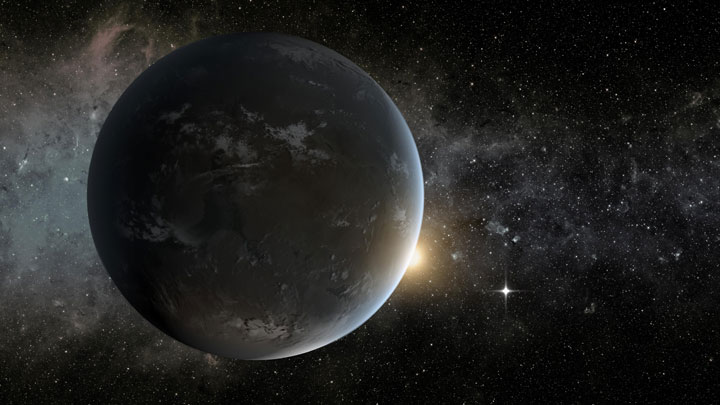TORONTO – As long as we’ve understood that there have been other worlds out in the universe, we’ve longed to know if there was life out there. But a team of scientists says we’re doing it wrong and could be setting ourselves up for disappointment.

According to research led by Hanno Rein, an assistant research professor at the University of Toronto’s Department of Physical and Environmental Science, searching for life is more complicated than we think.
Many scientists conduct follow-up studies on data collected by NASA’s Kepler Space Telescope, which is searching for Earth-like planets orbiting sun-like stars.
READ MORE: Another Earth? Astronomers spot most Earth-like planet yet
In order to find what they believe to be evidence of past or present life on planets orbiting other stars — called expolanets — they search for biosignatures, such as oxygen and methane. If they’re both there at the same time, scientists believe that’s a good indication that there’s life.
But using those two markers, there’s the possibility scientists they will get false-positive results.
“What people are looking for on other planets, to see if there’s life, is molecules in the atmosphere,” Rein told Global News. “And a single molecule can always be easily created by some non-biological process like volcanoes, or some other chemical reaction.”
And Rein believes that a moon could create an illusion of the presence of these two chemicals.
WATCH: 16×9 Search for Life
But we’ve yet to find a moon oribiting an exoplanet, said Jill Tarter, the Bernard M. Oliver Chair for SETI, an institute dedicated to the search for life in the universe.
That said, she’s pleased we’re having a conversation about false positives in the search for alien life.
The character in Carl Sagan’s fictional novel and movie Contact — about one astronomer’s dedication to searching for life in the universe — was based loosely on Tarter.
“I think it’s a cautionary tale… There are people who, in the community of exoplanet researchers, are just absolutely convinced that oxygenic signature is ironclad,” she said. “But people are thinking more and more about it.”
Rein’s research highlights the importance of ensuring that the data we’re using is accurate.
“If we make such a bold statement saying there is life on a planet, we want to be pretty sure that this is right,” Rein said.
There should be positive takeaways from the research findings, Rein said. There’s the option to look around dimmer stars, which enables us to observe more of the exoplanet.
“That’s obviously a possibility,” said Tarter. “And that’s something we’re going to do.”
READ MORE: Ancient life on Earth may lead to finding ancient life on Mars
He also suggests we focus less on Earth lookalikes and take a closer looks at stars dimmer than our own sun. Stars classified as “M dwarfs,” which are much smaller and dimmer than our own, could be candidates in such a search.
But we could also look for life closer to home — in our own solar system. Some such candidates are Europa, a moon around Jupiter, and Enceladus, a moon around Saturn. Both of these active moons are spewing ice plumes into space, and both are believed to have oceans beneath their crusts.
“If we really want to find life, then these are probably our best bets,” said Rein.
No matter what the means are of searching for habitable exoplanets, it comes down to one thing, Tarter said.
“It’s all about searching for life in the universe.”


Comments